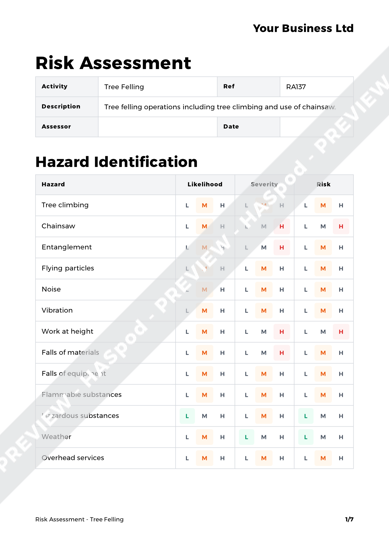

Early growth is improved when a tree is immediately tied to a support system.
Tree work safety checklist install#
Install a wire trellis that will allow the tree to be supported to 9 feet.Photo: Tara Baugher Timely installation of support and irrigation systems Multiple applications of low rates of calcium nitrate are likely to be more effective than a single application. Wide herbicide strips encourage early tree growth, while thick sod middles discourage the establishment of broadleaf weeds that may attract bees away from apple flowers or serve as virus vectors. Use caution to prevent contact of fertilizers or herbicides with young bark on the trunk.After the ground has settled and the trees have started to grow, apply 2 to 4 ounces of calcium nitrate per tree in each of two split applications, a month apart.Research shows that orchard floor management can influence early tree growth more than fertilizer application. Maintain a 4-ft wide herbicide strip in the tree row to prevent competition for nutrients and water.Also monitor for early signs of deer browsing and dogwood borers.

In scouting your block, monitor closely for apple scab along with foliar-feeding insects that inhibit early tree growth.

Photo: Tara Baugher Simplified rules based on "Science of Pruning" research The goal is for the tree to reach the top wire by the end of Year 2 and for a fruiting wall to be in place in Year 3. Avoid heading cuts, as removing the apex of either the leader or the laterals results in increased vegetative growth and reduced fruit bud initiation.Remove any feathers that are larger than two-thirds the diameter of the leader, leaving a short stub for limb renewal.Begin training the tree to a conical tree form using "tall spindle" training strategies presented in a Penn State Extension "Learn Now" video titled The Apple Orchard System Blueprint.Remove all feathers below 24 inches using a flush cut, just outside the collar at the base of the shoot.Photo: Jake Scholl Tree training following planting The well-established sod will out-compete broadleaf weeds that may serve as reservoirs for viruses associated with tree decline. Following two years of bio-remediation, a slow growing endophyte-enhanced fescue mix was planted in fall 2016. This planting is in Berks county, and the grower cooperator is Jake Scholl. With support from a USDA-NIFA beginning farmer grant, "Models for the Future" apple plots were planted in locations around the state this spring. Timely orchard floor, irrigation, pest, and nutrition management promote optimum tree growth. Simplified tree training strategies decrease the need for time-consuming bending of limbs later in the season or next year. Depending on where you are with your planting season, you will start at a different place on the following check list. Some growers were able to take advantage of an early window for planting fruit trees in February while others are just now completing their planting of new orchards.


 0 kommentar(er)
0 kommentar(er)
